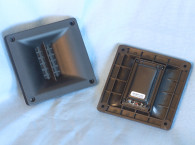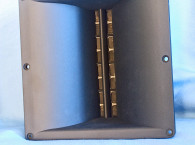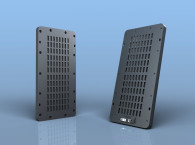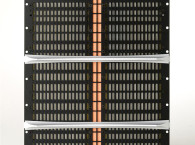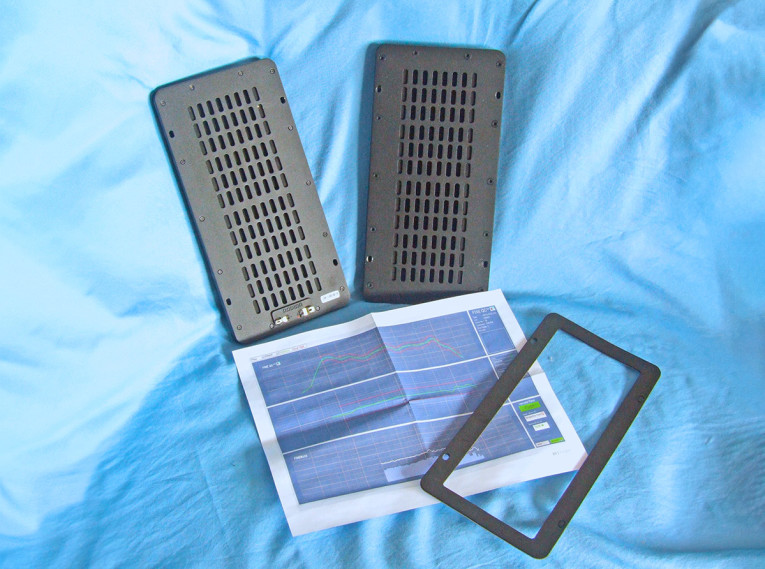
It is interesting to note that all the Radian ribbon high-frequency devices were designed by 35-year loudspeaker engineering veteran Igor Levitsky. Levitsky began designing planar ribbon drivers and speakers in the former Soviet Union in 1986 as a young engineer after graduating from Kiev Technical University in electroacoustics. Beginning in 1995, Levitsky worked with Hi-Vi Research where he developed a complete production process for manufacturing ribbon diaphragms. Over the next 20 years Levitsky developed planar ribbon drivers and speaker systems for the consumer market for BG Radia (acquired by Christie Digital in 2014) and for the pro market with SLS Audio (acquired by Dolby in 2014).
Levitsky also worked with Oppo and Dai-ichi on the development of the award-winning Oppo PM1 and PM3 planar magnetic headphones. He joined Radian Audio in 2018 with the goal of bringing the latest planar ribbon technology innovations to the pro sound market. Levitsky holds a total of six patents on planar ribbon driver and speaker design.
Features for the LM10n wide bandwidth ribbon transducer include a FEA-optimized symmetric push-pull neodymium magnet motor structure, an advanced polymer diaphragm, thermally conductive polymer frames, constant directivity in the horizontal plane, a continuous power handling of 70W AES with a 200W short-term IEC power handing, a 150Hz recommended high-pass crossover frequency (with a minimum 12dB/octave high-pass network), and a 2.83V/1m 94dB sensitivity. This is a fairly large ribbon and measures approximately 255mm (10”) × 116mm (4.6”) and can be utilized in both open-back (dipole) and closed-back (monopole) formats.
Testing commenced using the LinearX legacy LMS analyzer to produce the 300-point stepped sine wave impedance plot shown in Figure 1. With a nominal 6Ω impedance, the LM10n has a 6.4Ω DCR, a very minor resonance at 132Hz, and a minimum impedance of 6.28Ω and at 2.79kHz.
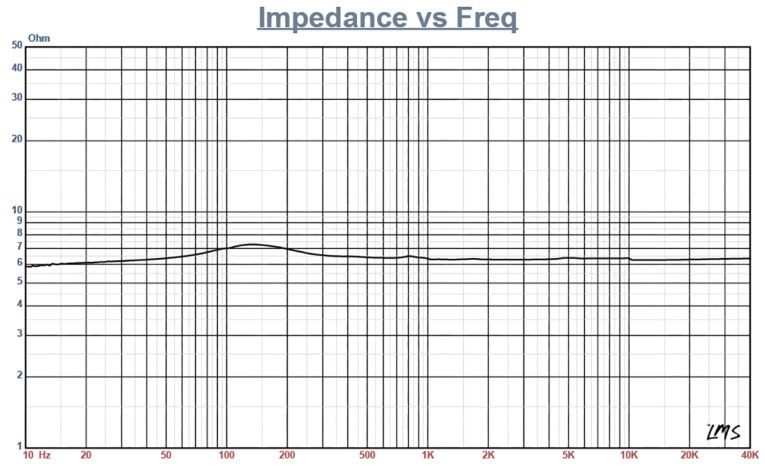
Next, I mounted the LM10n ribbon in an enclosure that had a 18”×10” baffle and measured both the horizontal and vertical on- and off-axis at 2V/0.5m (normalized to 2.83V/1m) from 0° on-axis to 45° off-axis using the Loudsoft FINE R+D analyzer and GRAS 46BE microphone (supplied courtesy of Loudsoft and GRAS Sound & Vibration).
Figure 2 shows the on-axis frequency response, which displays a smooth rising response from about 300Hz (the low-frequency limitation on the windowed FFT SPL measurement) to 10kHz where the driver begins its second-order low-pass roll-off. Obviously, some kind of filter correction would be required, either in the form of a passive contour network or an active shelving network.

Figure 3 shows the 0° to 45° on- and off-axis response in the horizontal plane. Figure 4 displays the normalized horizontal plane response. Figure 5 shows the 180° horizontal polar plot (in 10° increments with 1/3 octave smoothing applied), generated by the CLIO Pocket analyzer and accompanying microphone (courtesy of Audiomatica SRL). For the vertical plane of the LM10n, Figure 6 gives the 0° to 45° response, normalized in Figure 7, with the CLIO-generated power plot illustrated in Figure 8. Last, Figure 9 gives the two-sample SPL comparison, showing the two Radian LM10n planar driver samples to be matched within ≤1dB throughout the entire operating range of the transducer.
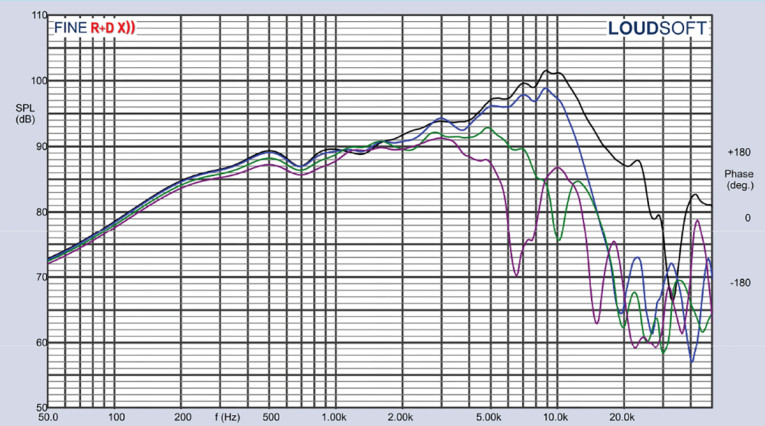
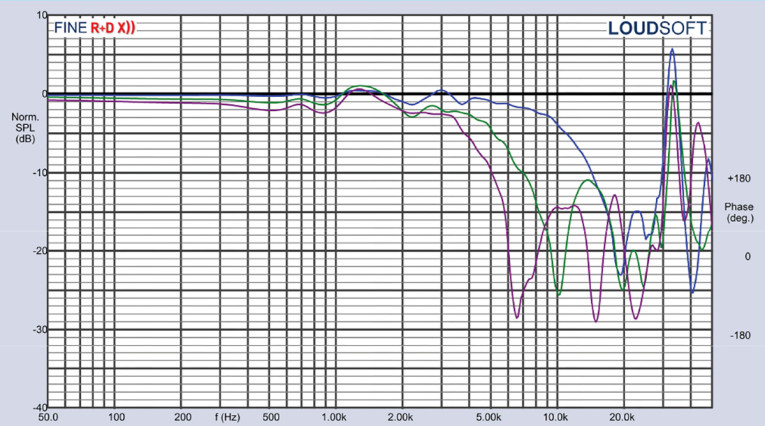




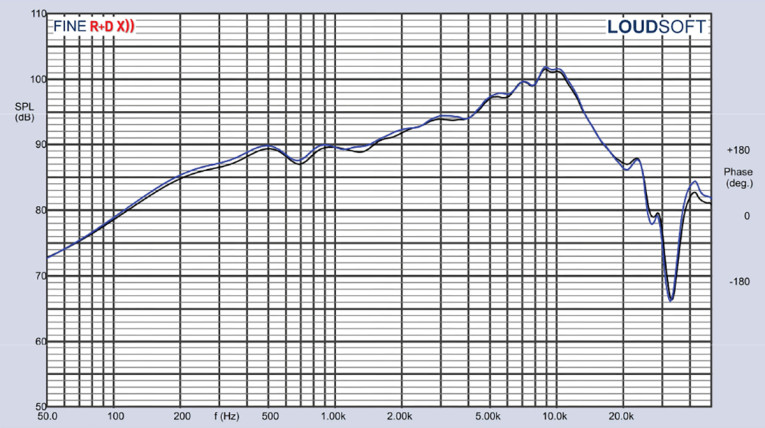
For the remaining series of tests, I set up the Listen AudioConnect analyzer and 1/4” SCM microphone (provided by Listen, Inc.) to measure distortion and generate time-frequency plots. For the distortion measurement, the LM10n was again mounted the same enclosure as was used for the frequency response measurements, and the SPL set to 94dB at 1m (2.63V determined by using a pink noise stimulus generator and internal SLM in the SoundCheck 21 software). I then measured the distortion with the Listen microphone placed 10cm from the mouth of the transducer. This produced the distortion curves shown in Figure 10. Note that as with the Radian LT6 and LT2, the LM10n has an extremely low third harmonic level.
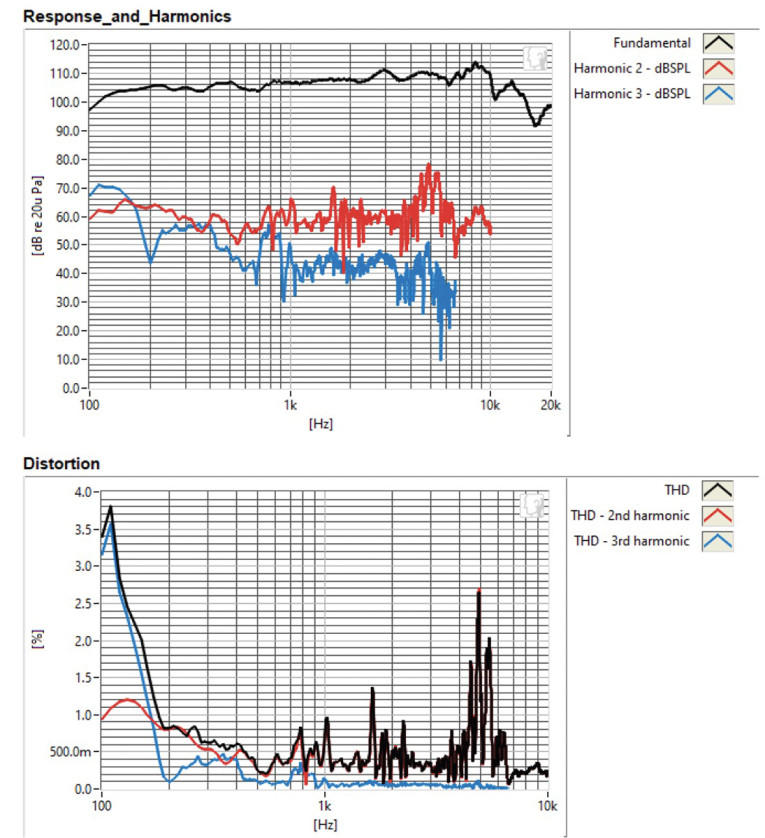
Following this test sequence, I then set up SoundCheck 21 to generate a 2.83V/1m impulse response curve and imported the data into Listen’s SoundMap Time/Frequency software. Figure 11 shows the resulting cumulative spectral decay (CSD) waterfall plot. Figure 12 shows the Short Time Fourier Transform (STFT) plot.
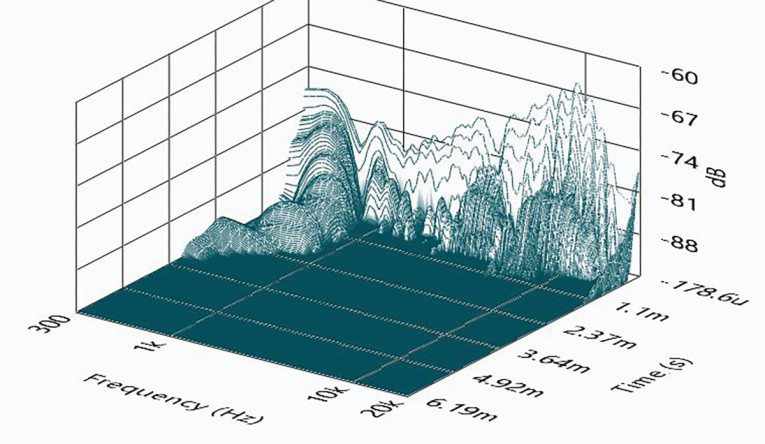
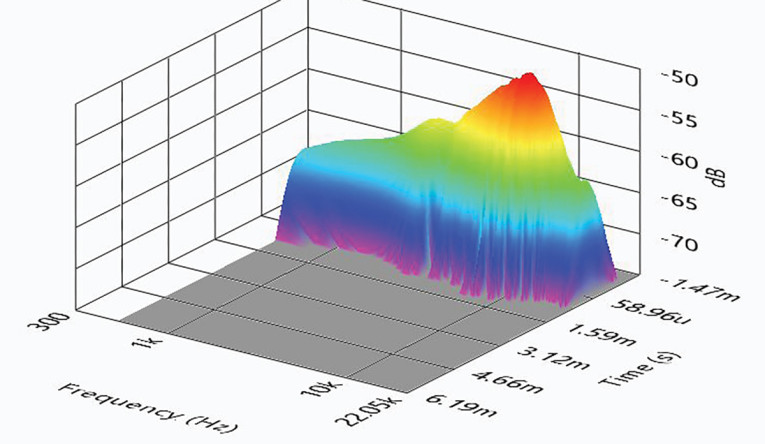
Looking over all the data, Radian Audio Engineering’s LM10n is a very interesting large-format ribbon and would likely work well in a four to six ribbon line source array. Given the reputation of ribbon transducers for detail and clarity, along with the excellent Radian build quality, the LM10n would be a good alternative to consider for both home audio or studio monitors. For more information, visit www.radianaudio.com. VC
This article was originally published in Voice Coil, January 2024.




